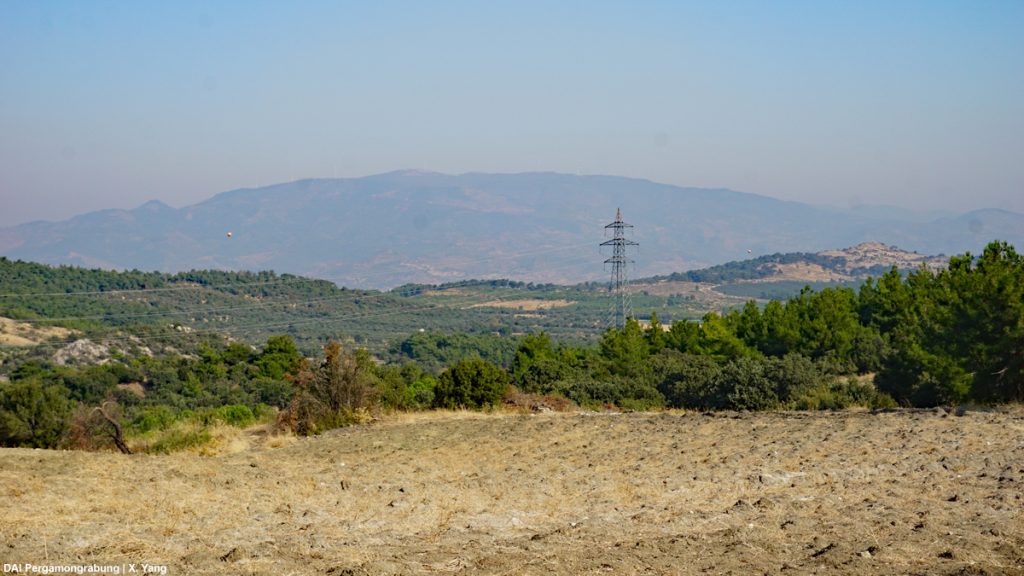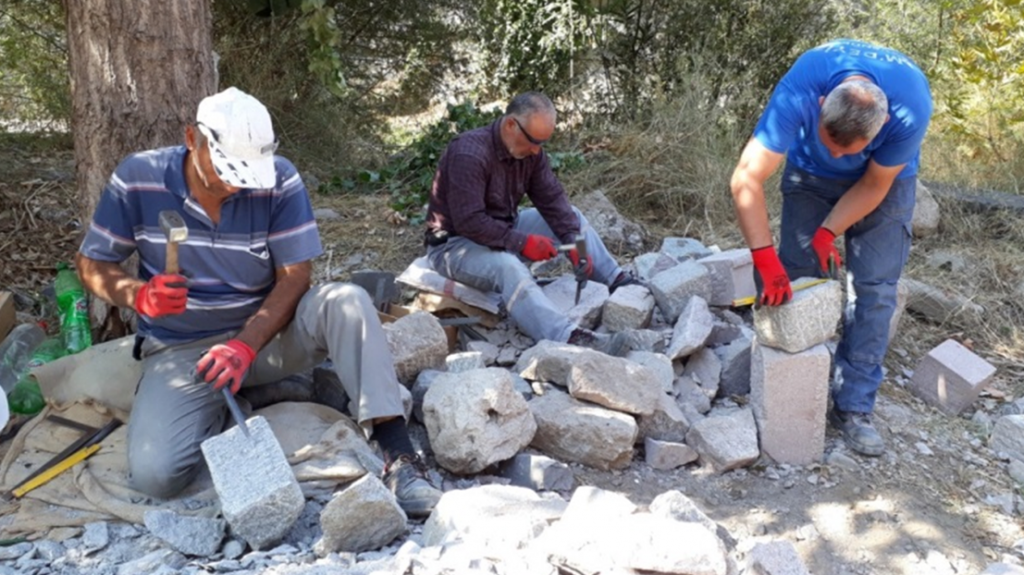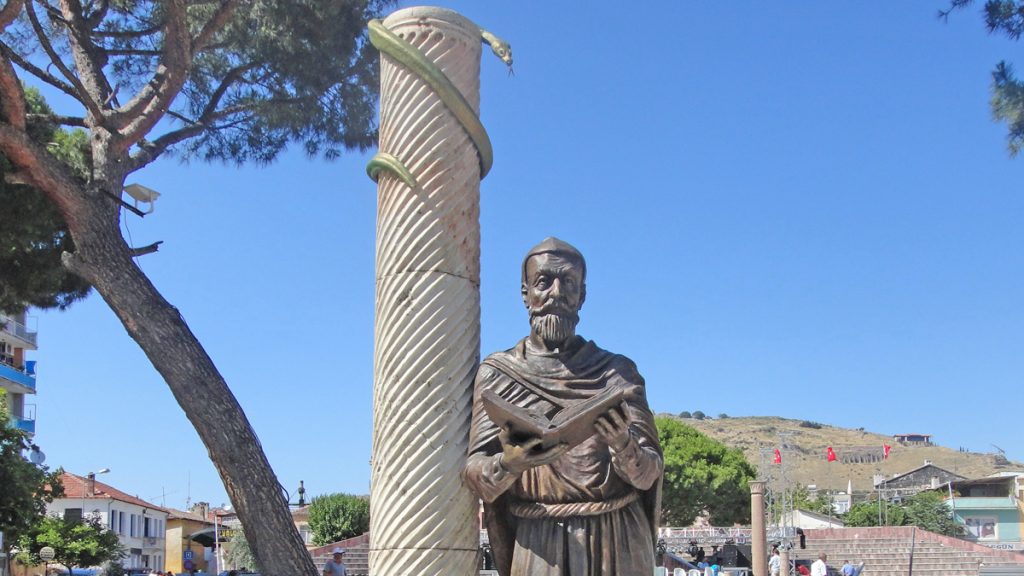Pergamon Excavation House, the heart and center of the Pergamon Excavation, opened its doors to visitors from Bergama on Saturday, September 7, 2024. This special event, organized for the first time within the scope of ‘Pergamon Meetings’ with the contributions of the Ministry of Culture and Tourism of the Republic of Türkiye and Bergama District Municipality, aimed to offer participants a day full of history and archaeology.
The event, which was announced to a wide audience through social media and street posters, offered visitors the opportunity to explore the Pergamon Excavation House and get to know all the archaeological research processes closely. The event was organized as a tour through the work and daily life of the international team of DAI´s Pergamon Excavation. Visitors were given a brochure comprising a map of the excavation house and the 10 stations on the tour. At each station, a tick was placed on the participation certificate on the back of the brochure to complete the tour. At the end of the event, Felix Pirson, the excavation director, signed the certificate of participation and presented it to the visitors as a memory.
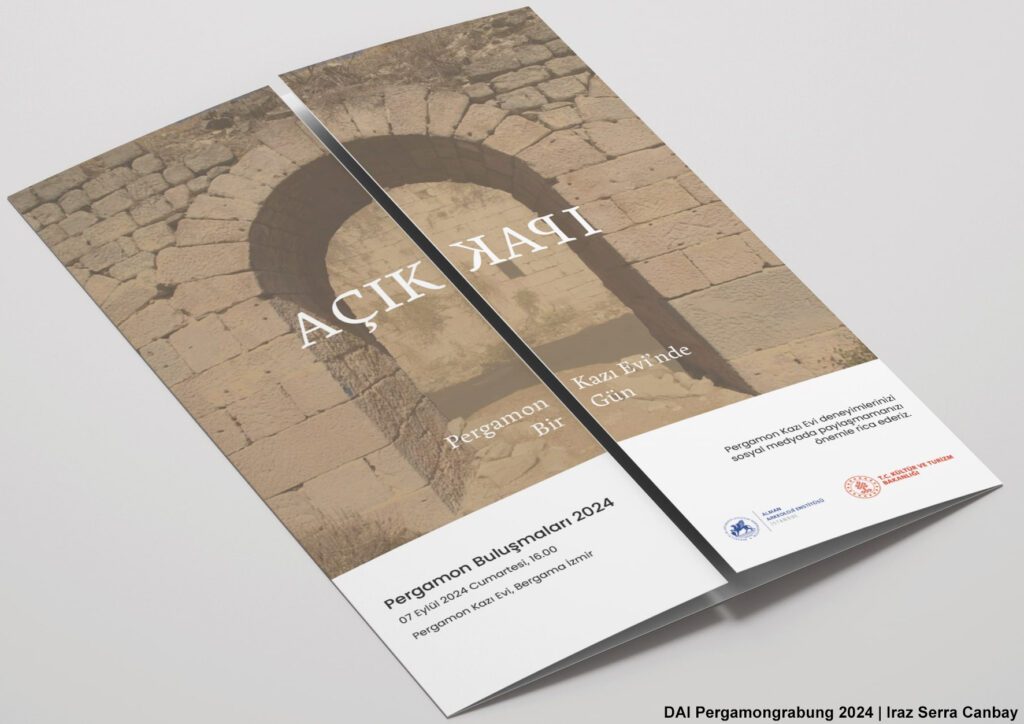
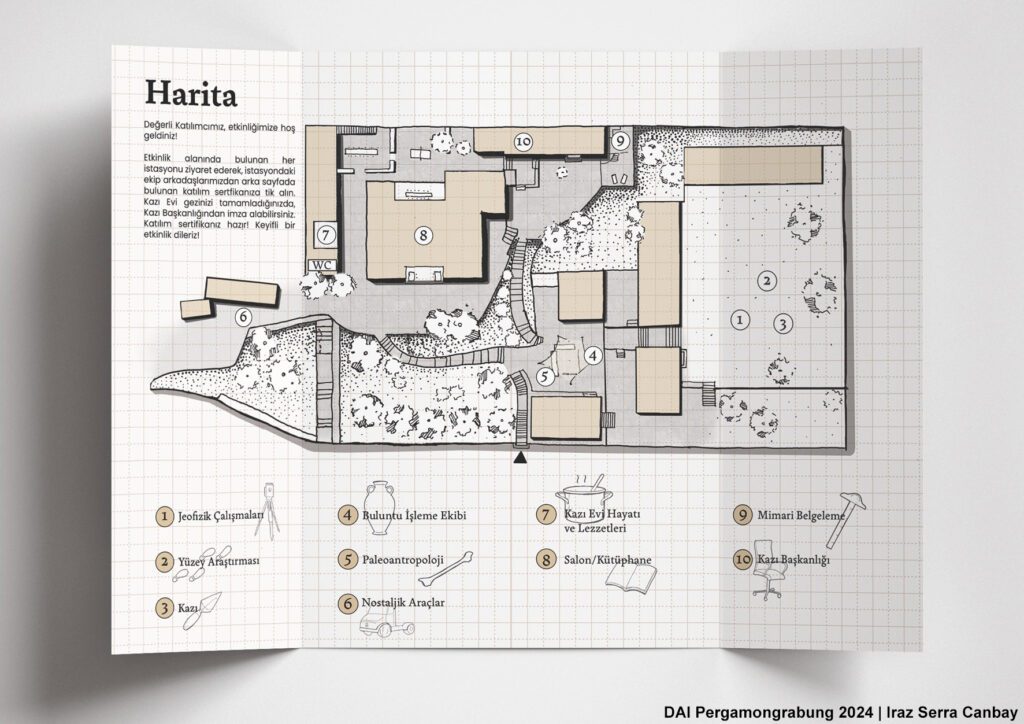
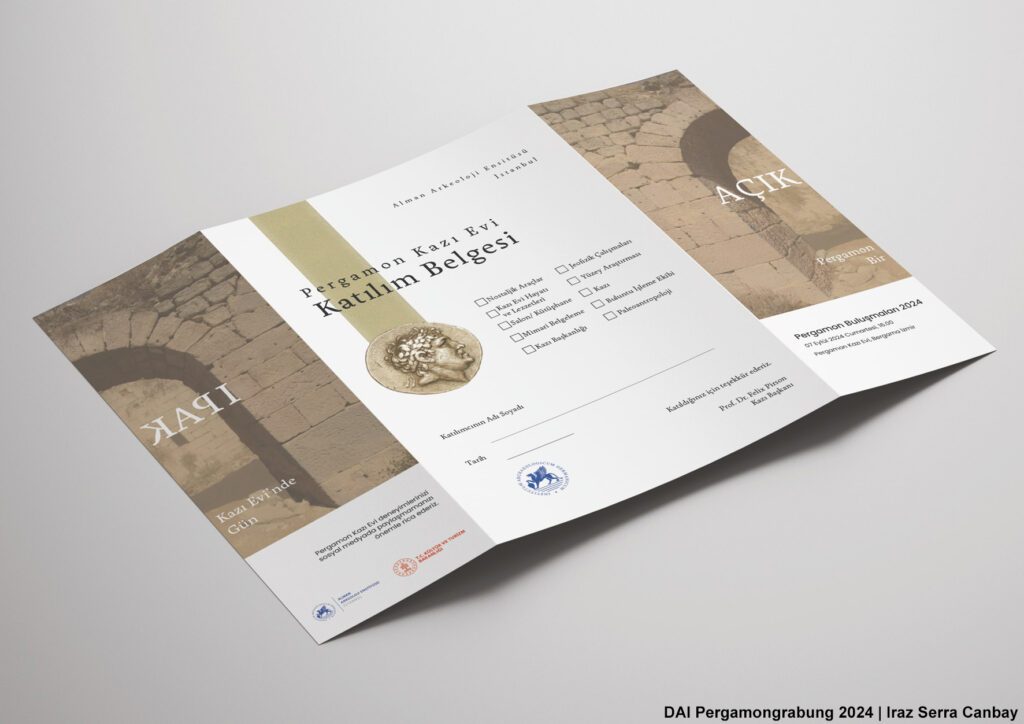
The tour started in the Lower Agora of the ancient city of Pergamon with the introduction of the Geophysics team. At this station, visitors had the opportunity to closely examine the geophysical instruments used in excavations and surveys. Equipment such as GSSI and magnetic systems were among the most interesting tools.
This was followed by a presentation by the Survey team at Lower Agora. In this station, visitors were informed about surveys in the immediate surroundings of the city. Our team presented the mapping and documentation techniques, which are among the methods used in survey. The equipment used in this process was introduced.
The Lower Agora was completed with the Excavation Station. Here, visitors had the opportunity to observe how the excavation process is carried out on the site. Our team gave information about the equipment used in the excavation and their use. They also introduced documentation techniques in the field. Some of the finds obtained during the excavation process were also exhibited.
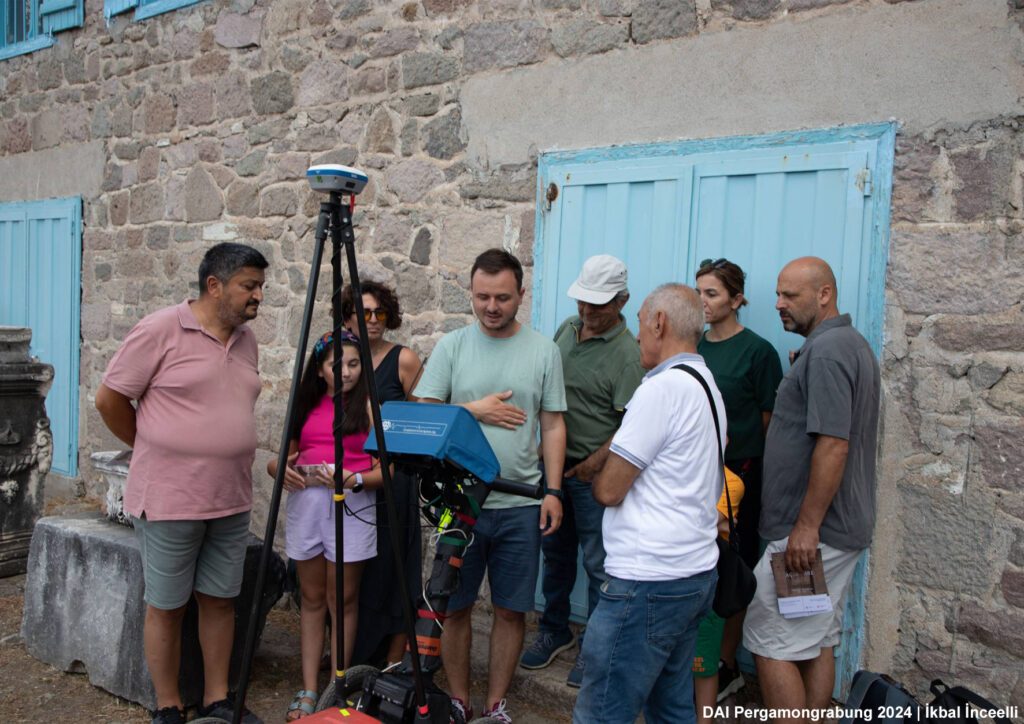
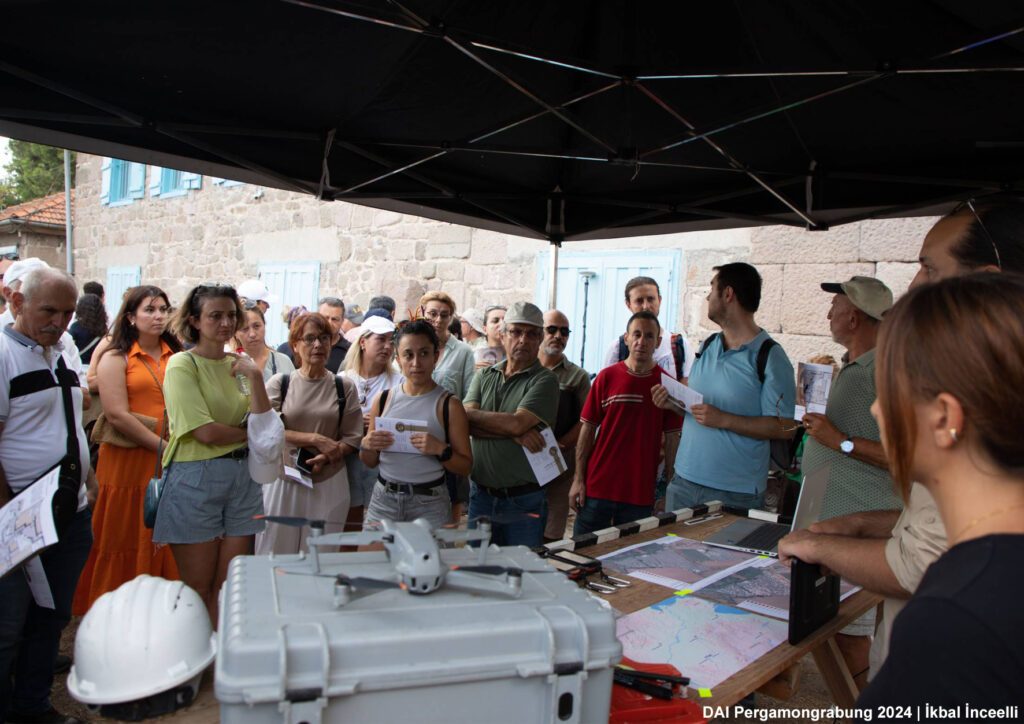
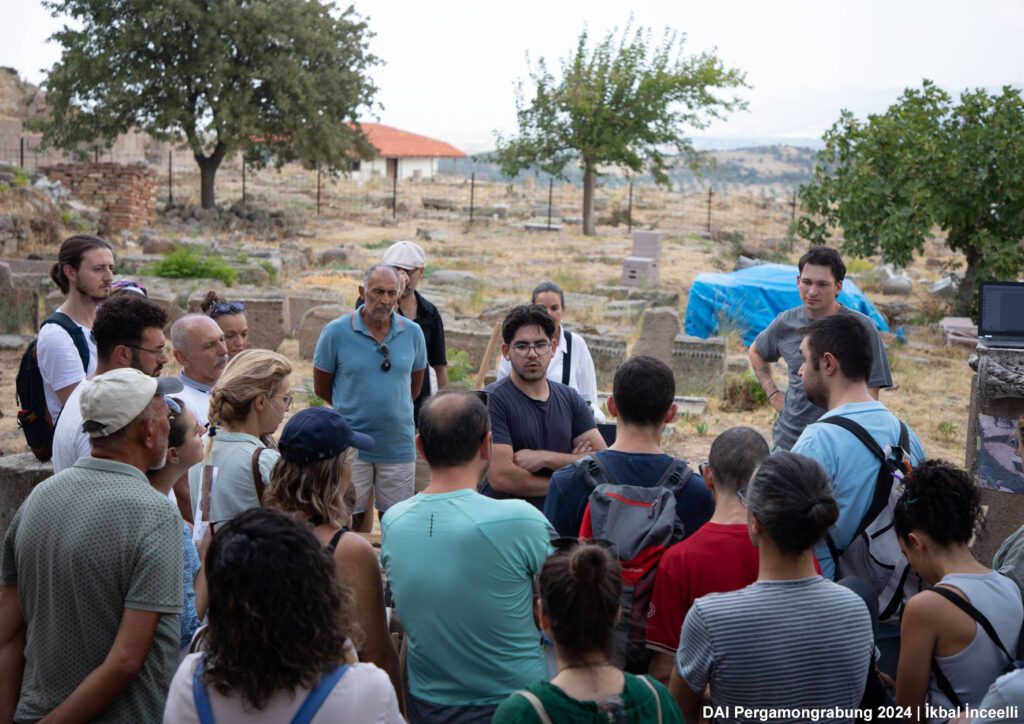
Proceeding in the inner parts of the excavation house, the tour continued with the Find Processing Station, where mainly ceramic finds were examined. An interactive presentation was realized with the finds, documents and equipment such as special microscopes and cameras. Thanks to the detailed narration, visitors had the opportunity to closely observe the subtle workings of the process of finds processing.
The next station, Paleoanthropology, naturally attracted particular attention. Here the bones found during the excavation were exhibited. Our team explained the scope of the information obtained during the bone analysis process and what this information can show us about ancient life. Visitors were also involved in this process with the bone identification activity prepared by our team.
Another stop was the Architectural Documentation Station. At this station, our team explained the 3D modeling of larger architectural areas and parts with the Structure from Motion (SFM) technique and the documentation of these areas. At the same time, they presented the equipment used in the process such as total stations, cameras and software with examples to the visitors.
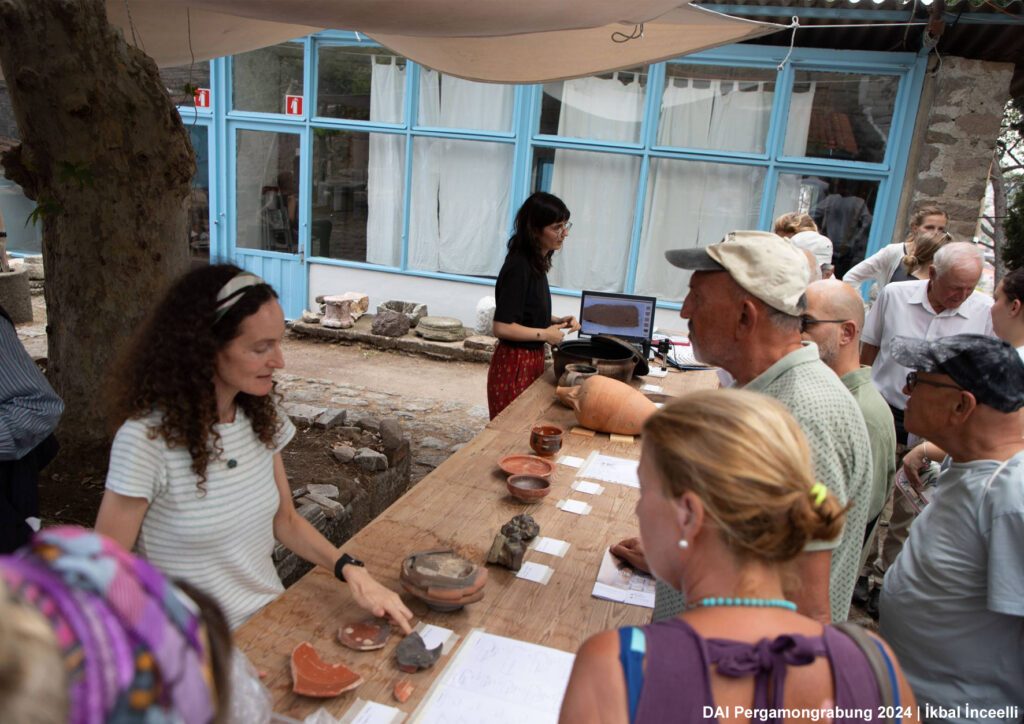
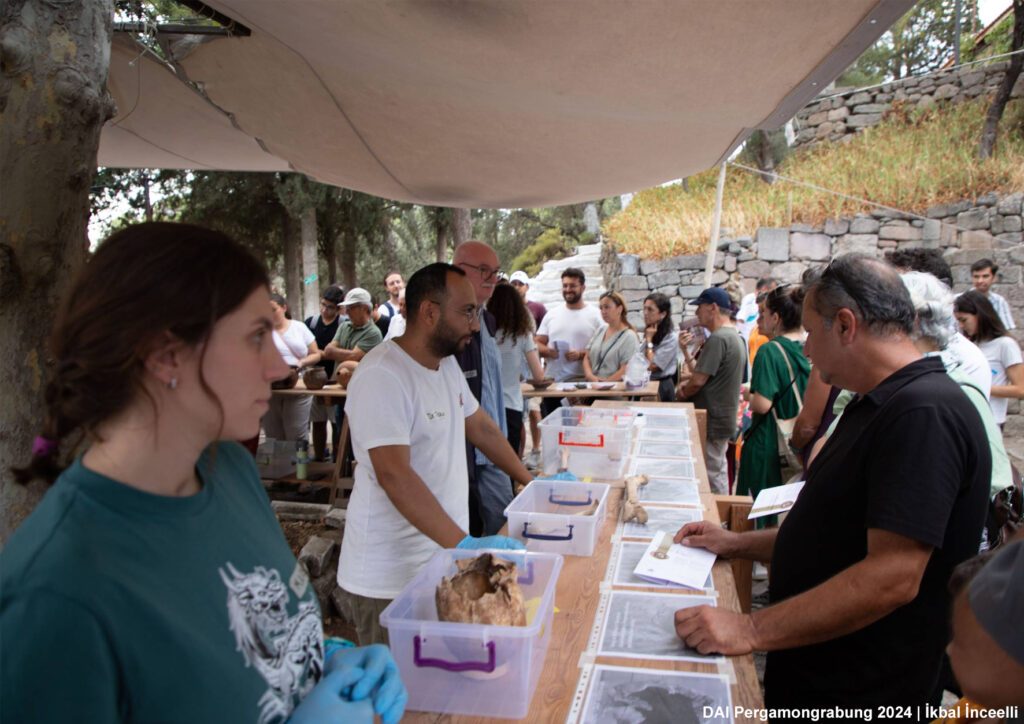
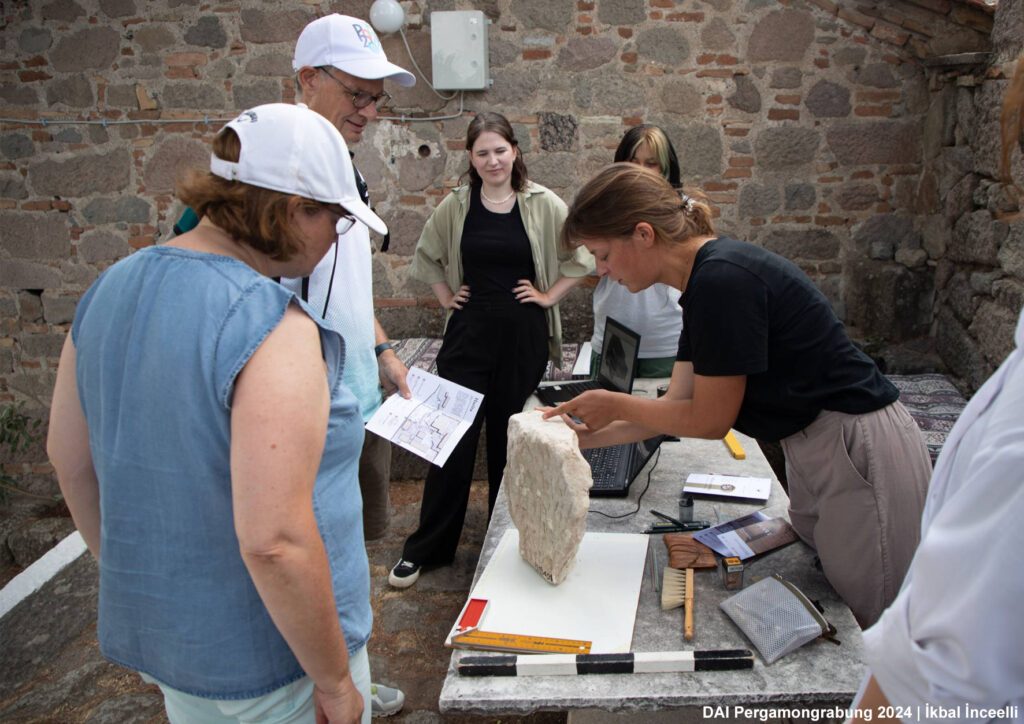
After the introduction of our work in the field, we moved on to the functioning of the excavation house. Our first stop here was the Nostalgic Vehicles Station. At this station, our old vehicles used in this challenging terrain were presented to the visitors by İbrahim Susamcıoğlu, guard of the excavation house and keeper of the old timers. Four different vehicles dating from the 1950s to the 1970s showed the visitors the aesthetics and functions of these work vehicles, which give an impressive example of automobile sustainability. Thanks to İbrahim and the other skilled craftsmen from Bergama, our vehicles are still in active use day by day.
The next station was the kitchen, which makes the excavation house a pleasant home to live in. The role of the Turkish and German dishes prepared in the kitchen in keeping the excavation team motivated was explained by Melahat Kaya, the chef, in detail. In this section, visitors had the opportunity to gain glimpses into daily life and habits in the excavation house from a broad perspective.
As we approached the end, our next stop was the ‘salon’ (living room and library built in 1904). Here, the history of the excavation house was presented. This cultural archive consists of nearly 150 years of research, books, maps and many other resources spanning many years. Our visitors had the opportunity to closely explore this treasure trove of information and the space that sometimes provides a cozy gathering place for our team.
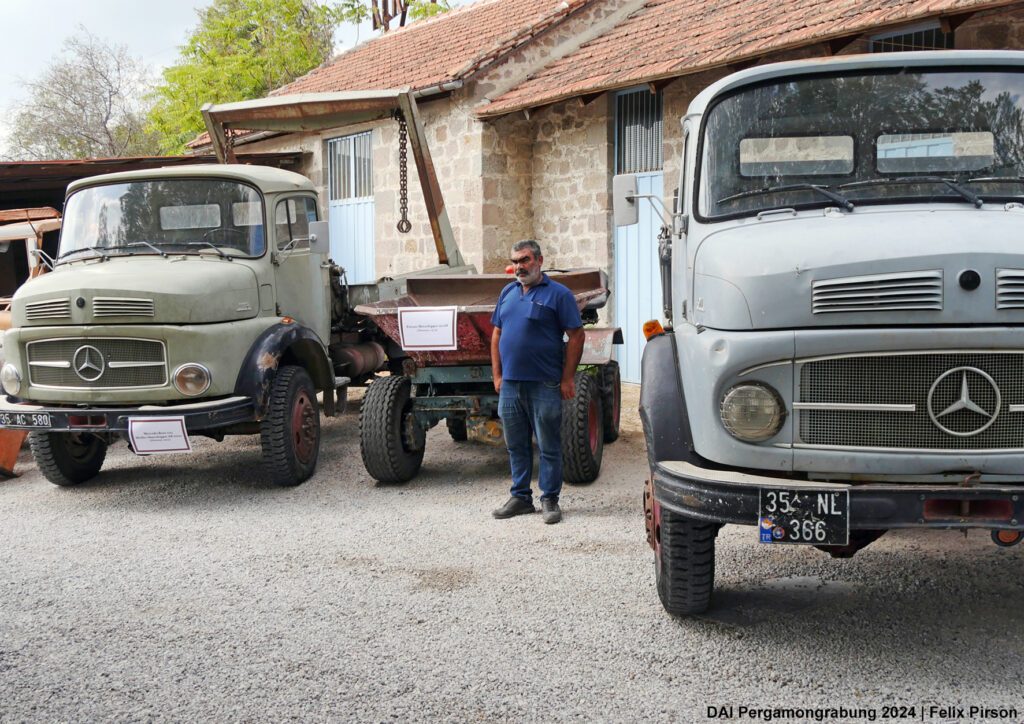
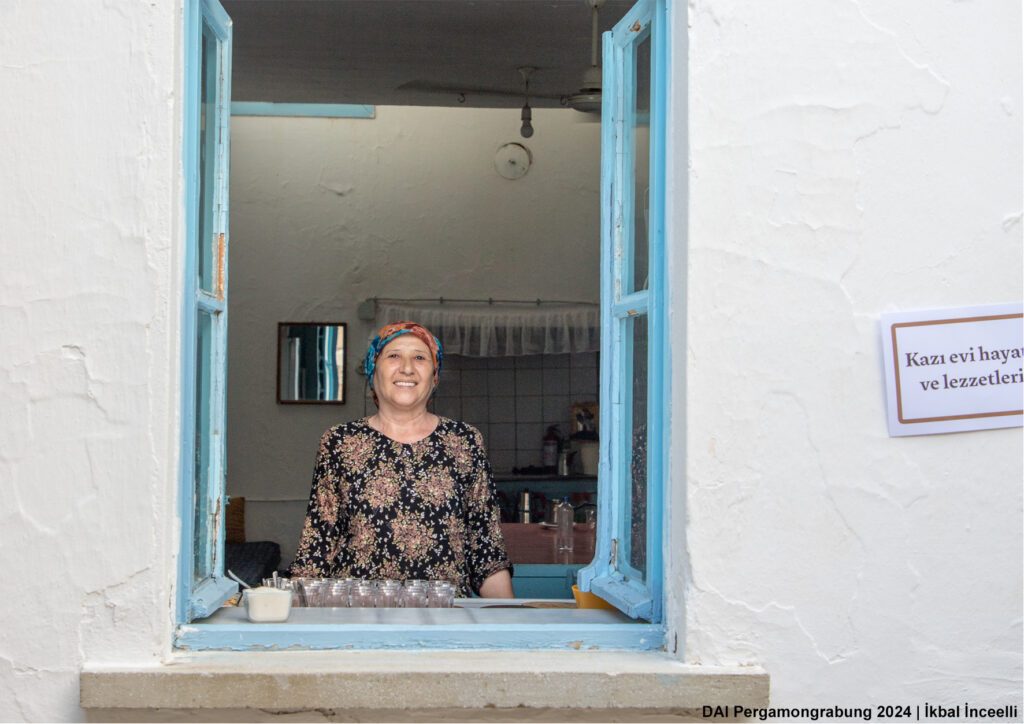
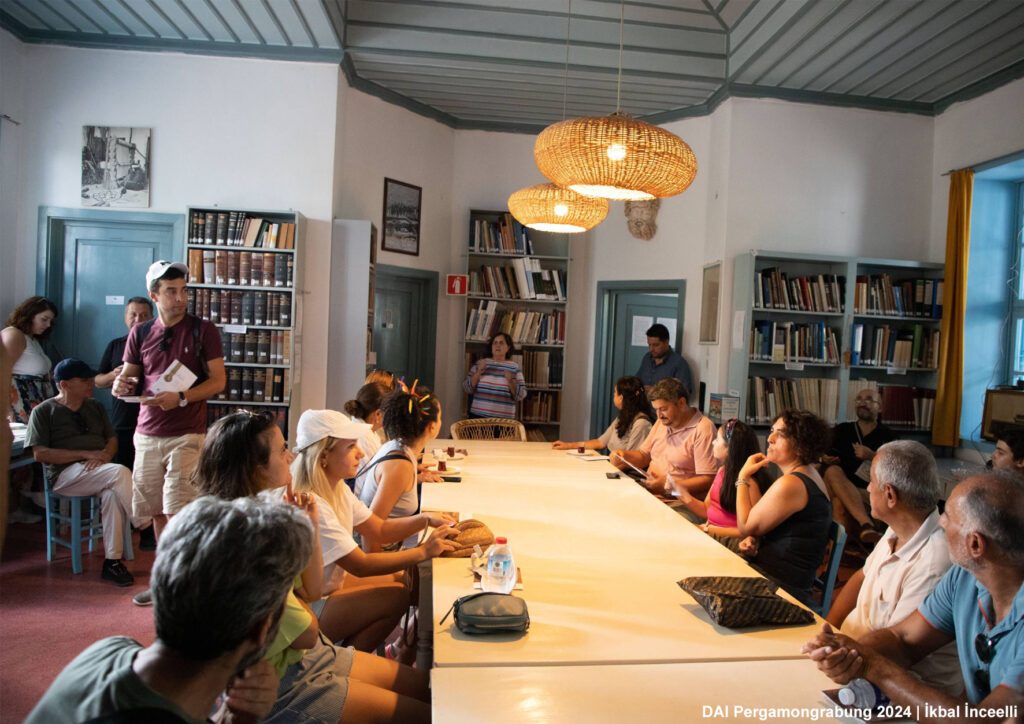
The last stop was the Excavation Director’s office, where Felix Pirson explained the management of the excavation to the visitors and showed them some of the office equipment left from previous decades. As a highlight the certificates of participation on the back of the visitors’ brochures were signed. By this means, our visitors could immortalize the memory of an unforgettable trip.
The Pergamon Excavation House tour offered an unforgettable experience for archaeology enthusiasts and history lovers, while at the same time providing important insights into the depths of the excavation process. The Mayor of Bergama, Tanju Çelik, honored us by attending our Open-Door Day event with his team.
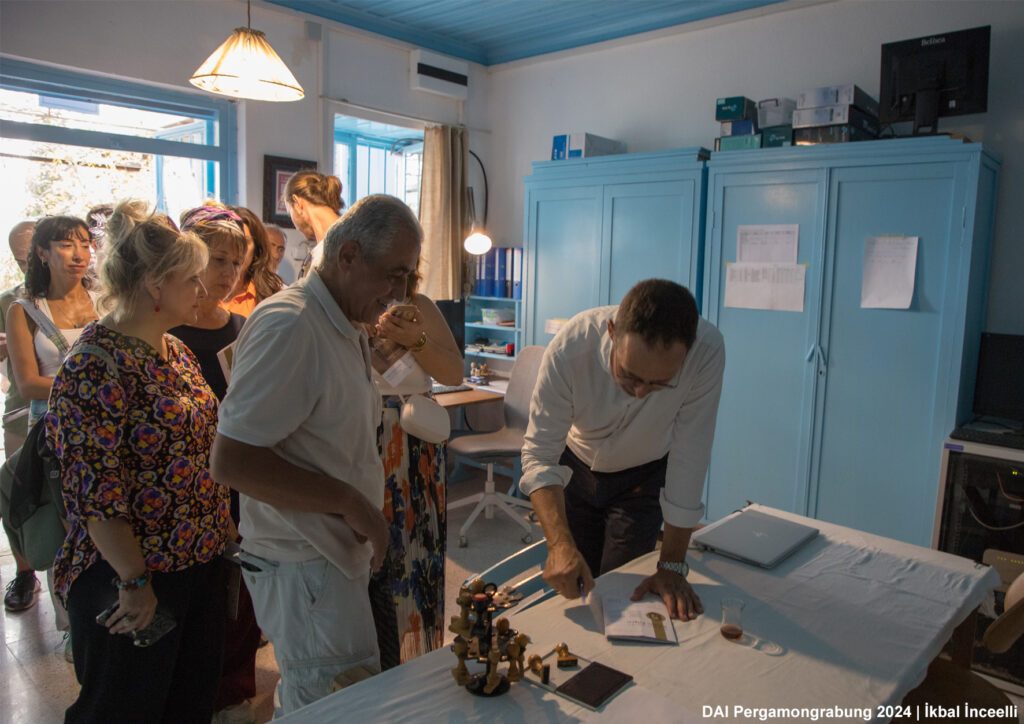
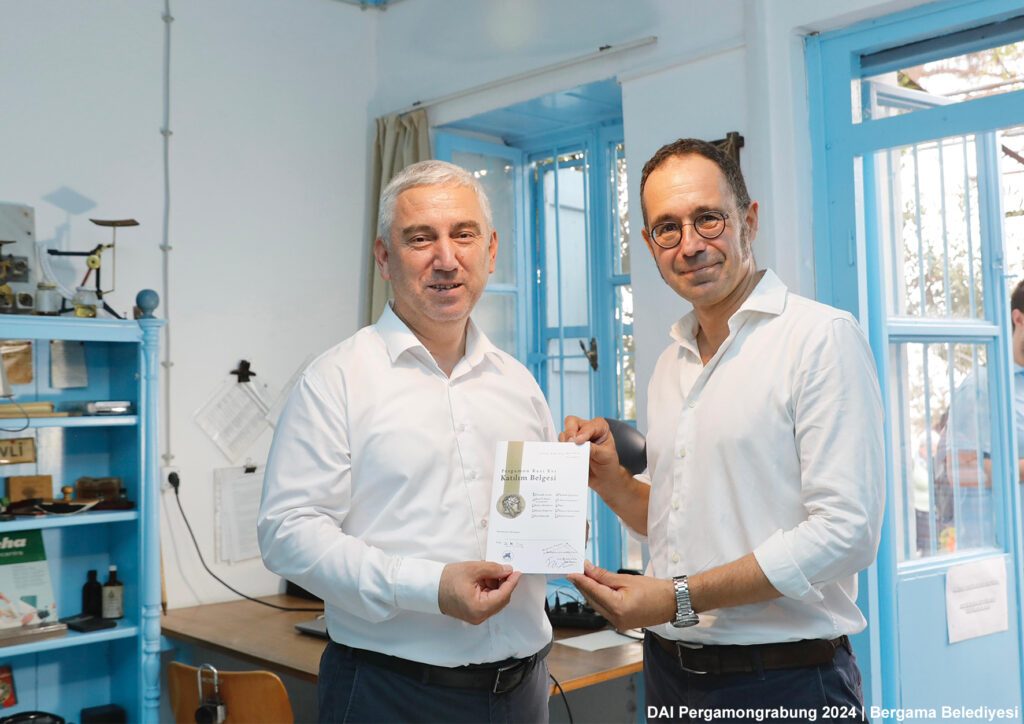
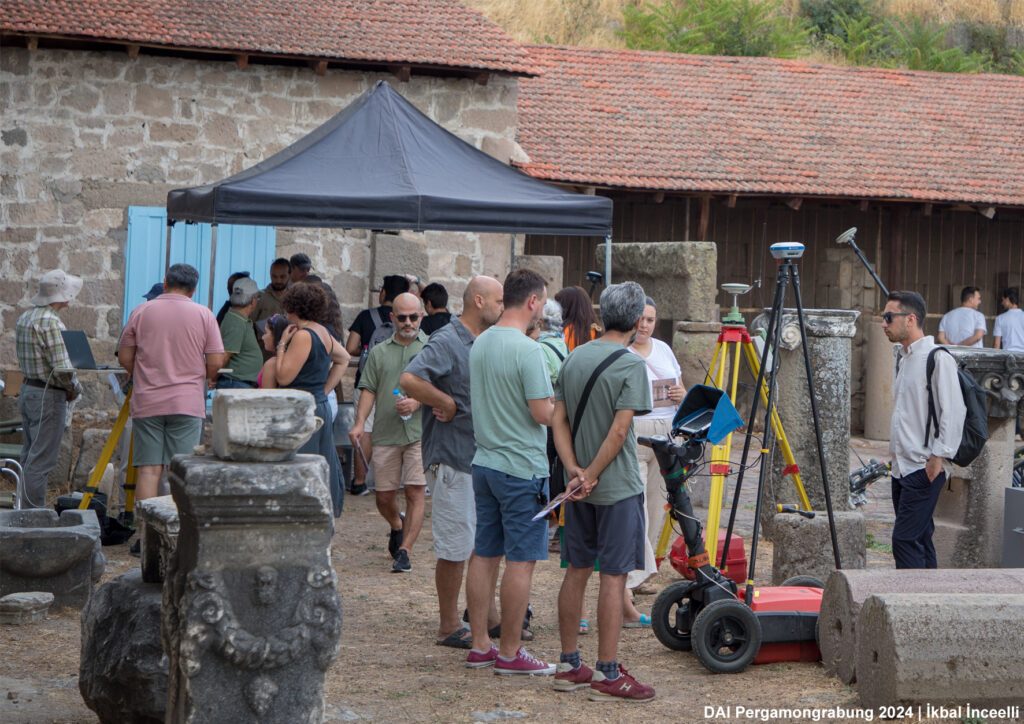
We hope that this trip was enjoyed by our visitors and we are waiting for all archaeology enthusiasts from Bergama for another trip next year!
—
—

